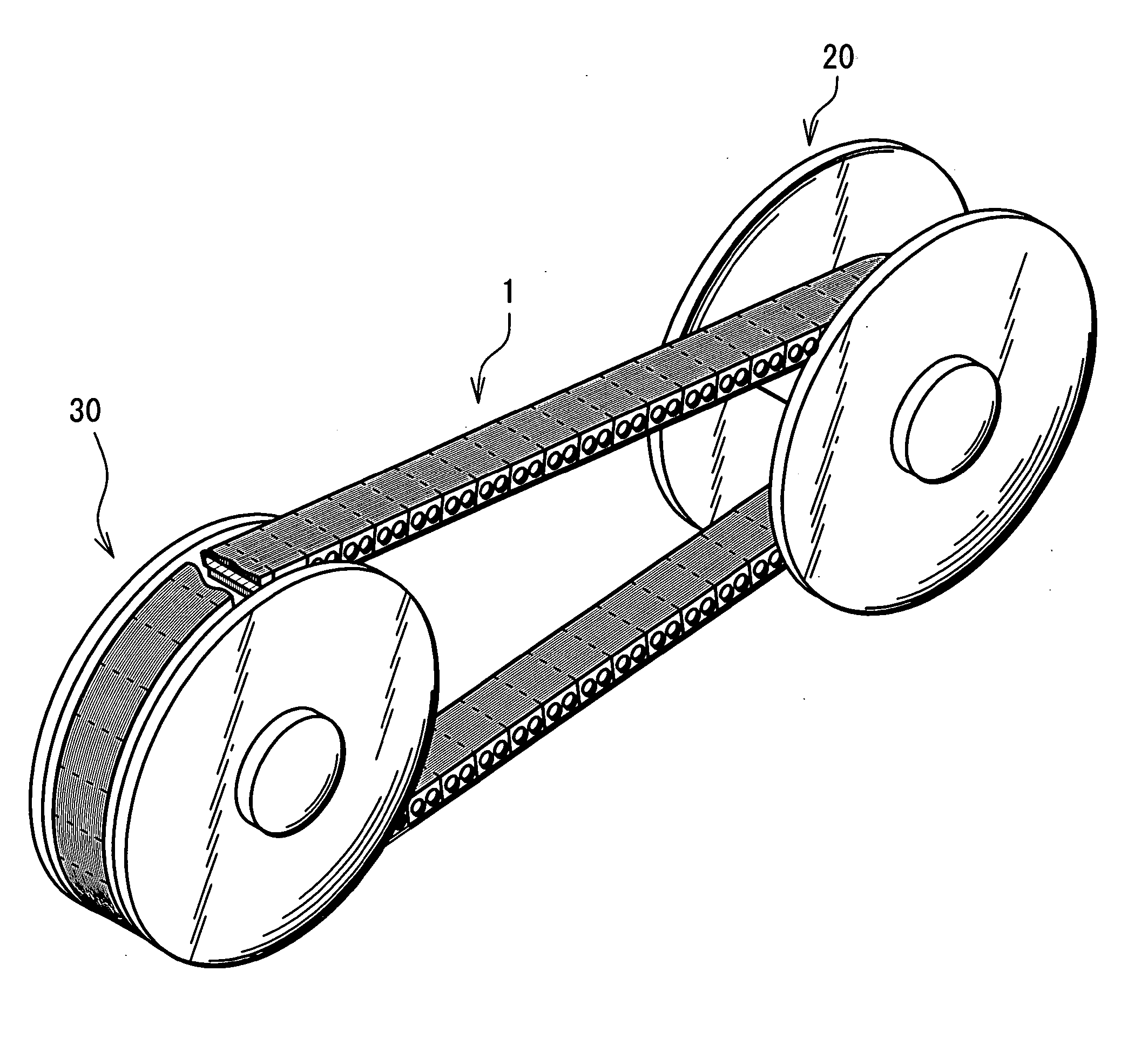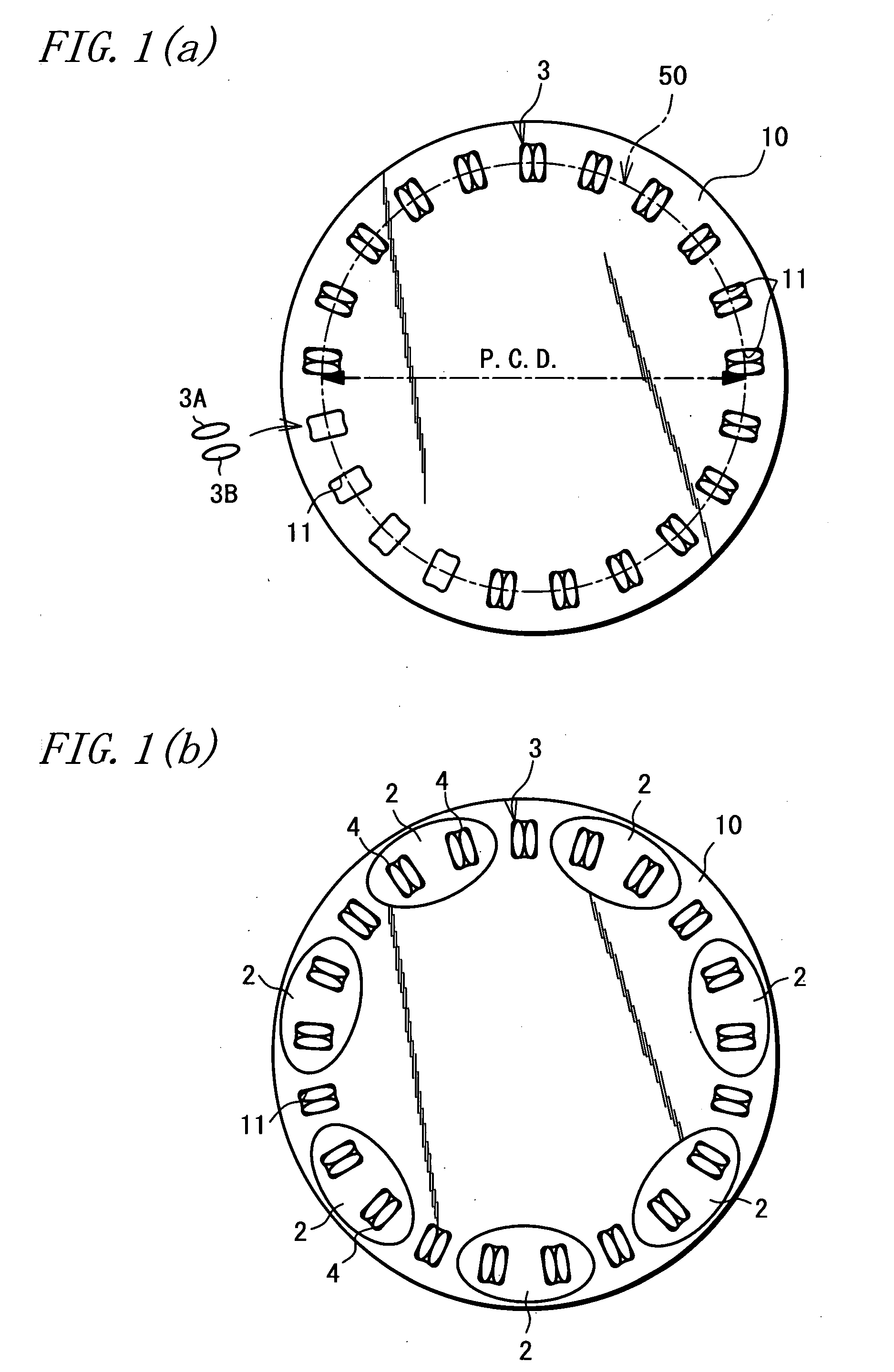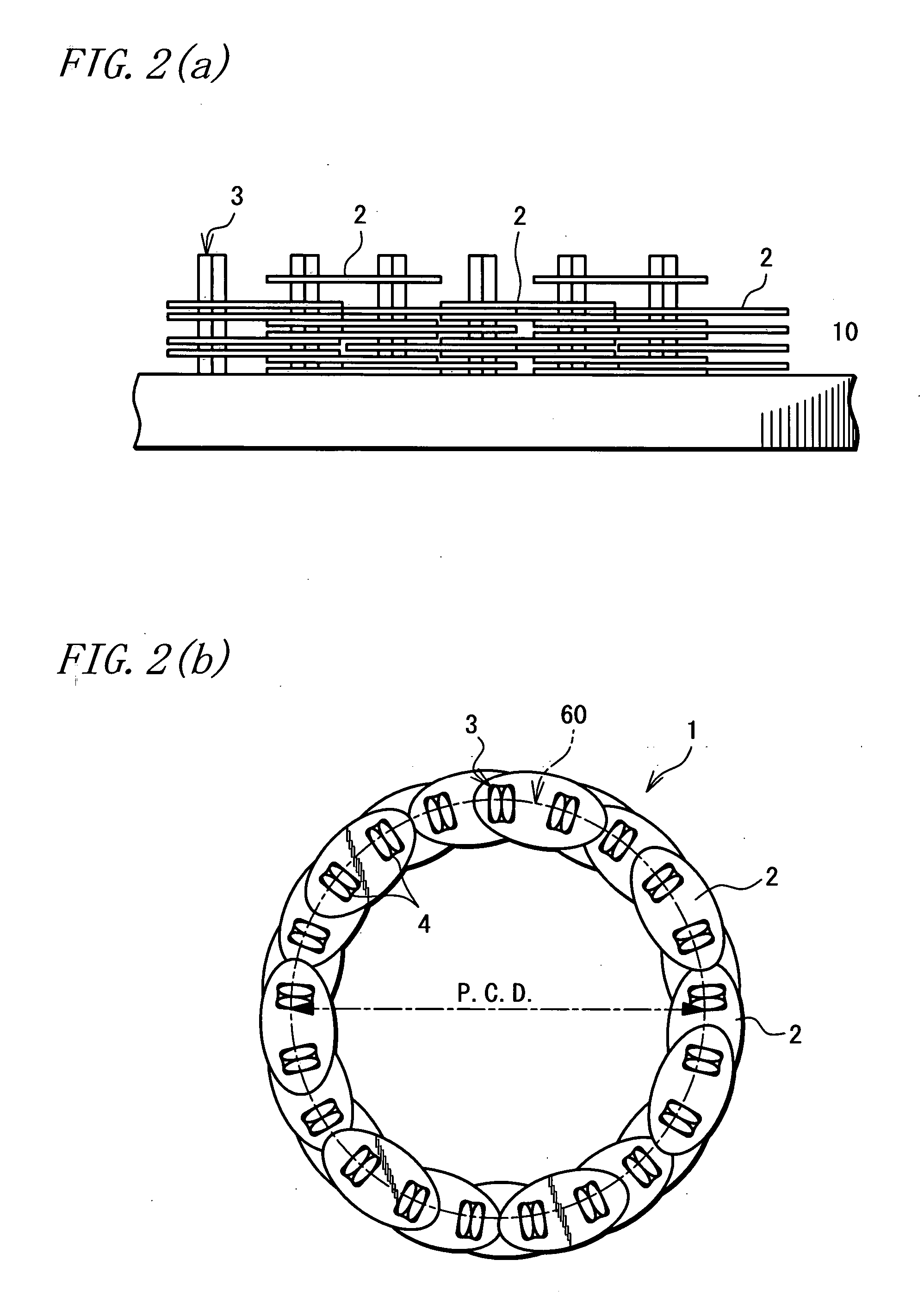Manufacture Method of Power Transmission Chain and Pin-Retainer Jig
a technology of power transmission chain and manufacturing method, which is applied in the direction of manufacturing tools, driving chains, mechanical apparatuses, etc., can solve the problems of reducing the efficiency of assembly operation, and achieve the effect of high convenien
- Summary
- Abstract
- Description
- Claims
- Application Information
AI Technical Summary
Benefits of technology
Problems solved by technology
Method used
Image
Examples
Embodiment Construction
[0022] One embodiment of the invention will hereinbelow be described with reference to the accompanying drawings. As shown in FIG. 2(b), a power transmission chain 1 (hereinafter, referred to as “chain”) according to the embodiment is in an endless form and includes a plurality of link plates 2 formed from a metal (such as a bearing steel); and a plurality of pins 3 formed from a metal (such as a bearing steel) and arranged in pairs for interconnecting these link plates 2. The chain 1 is used, for example, in a continuously variable transmission of an automotive vehicle. The chain is used as entrained between a drive pulley 20 and a driven pulley 30, as shown in FIG. 5.
[0023] The link plate 2 is an elliptical plate material and is formed with two through-holes 4 (a first through-hole, a second through-hole). Each pair of pins 3 are press-inserted through each through-hole 4. The link plates 2 are stacked in layers in a thicknesswise direction of the chain 1 as mutually overlapped i...
PUM
| Property | Measurement | Unit |
|---|---|---|
| length | aaaaa | aaaaa |
| power | aaaaa | aaaaa |
| groove width | aaaaa | aaaaa |
Abstract
Description
Claims
Application Information
 Login to View More
Login to View More - R&D
- Intellectual Property
- Life Sciences
- Materials
- Tech Scout
- Unparalleled Data Quality
- Higher Quality Content
- 60% Fewer Hallucinations
Browse by: Latest US Patents, China's latest patents, Technical Efficacy Thesaurus, Application Domain, Technology Topic, Popular Technical Reports.
© 2025 PatSnap. All rights reserved.Legal|Privacy policy|Modern Slavery Act Transparency Statement|Sitemap|About US| Contact US: help@patsnap.com



